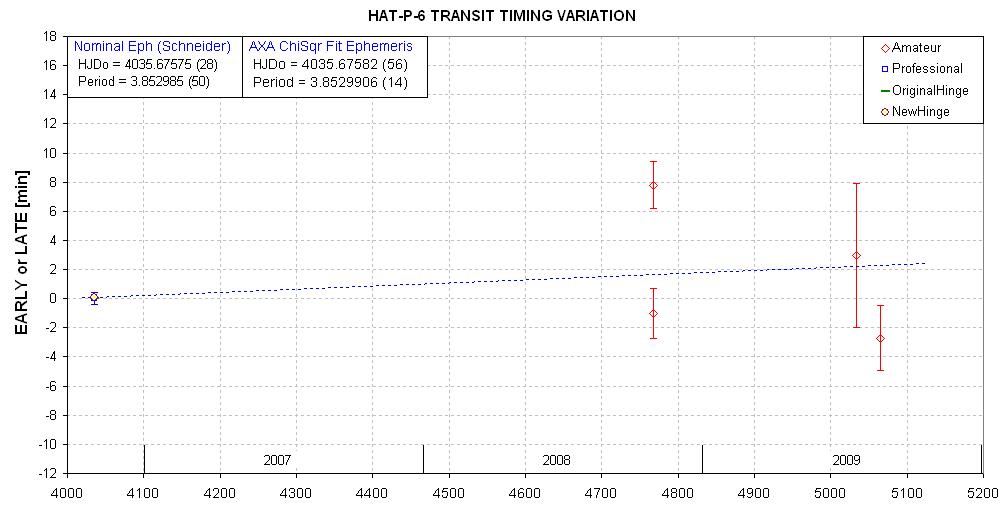
The JK-based mag's differ from the discovery
paper's reported mag's by ~0.8 mag. I'll do an all-sky calibration when
this field is observable.
RA = 23:39:05.8, Decl = +42:27:58
Season = September 21
B = 10.88, V = 10.54,
R ~ 10.3, I ~ 10.0, B-V = 0.34 (preliminary
mag's), J = 9.228, K = 9.313
HJDo = 4035.67575 ± 0.00028
& P = 3.852985 ± 0.000005
days (as listed in Schneider's Extrasolar Planets Encyclopaedia)
HJDo = 4035.67575
(56) & P = 3.8529906 (14) days (as solved
for using entries in AXA database)
Depth = 9.8 ±
0.8 (R,C-band) & 11.0 ± 0.3 mmag
(z-band)
Length = 3.43 ±
0.05 (R,C-band) & 3.51 ± 0.04 hr
Fp = 0.29 ±
0.05, F2 = 0.79 ± 0.10
b = 0.60 +- 0.03
Summary of Amateur Observations


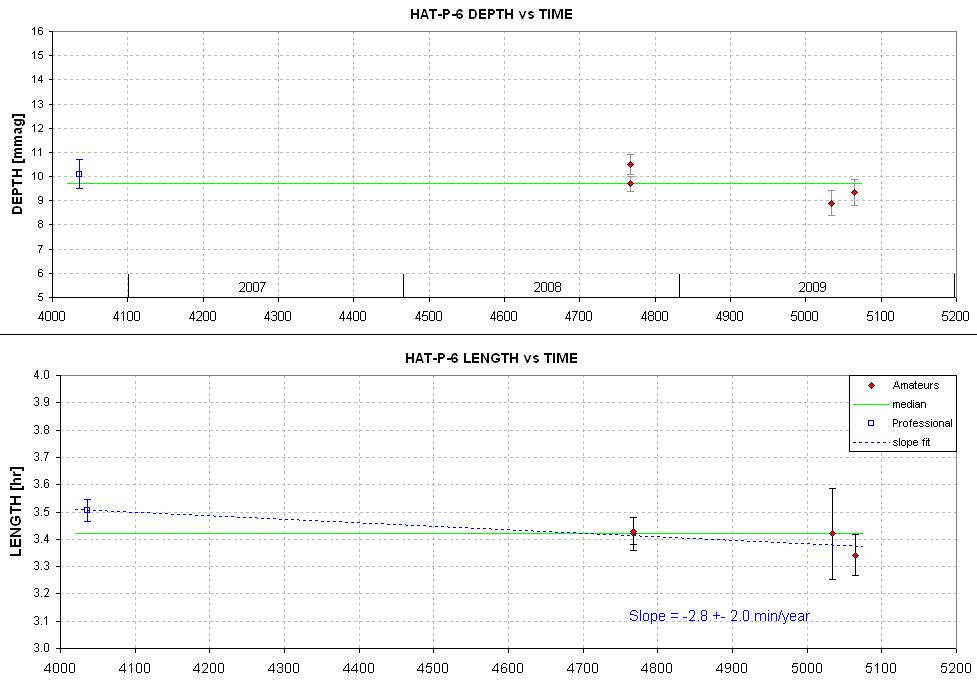
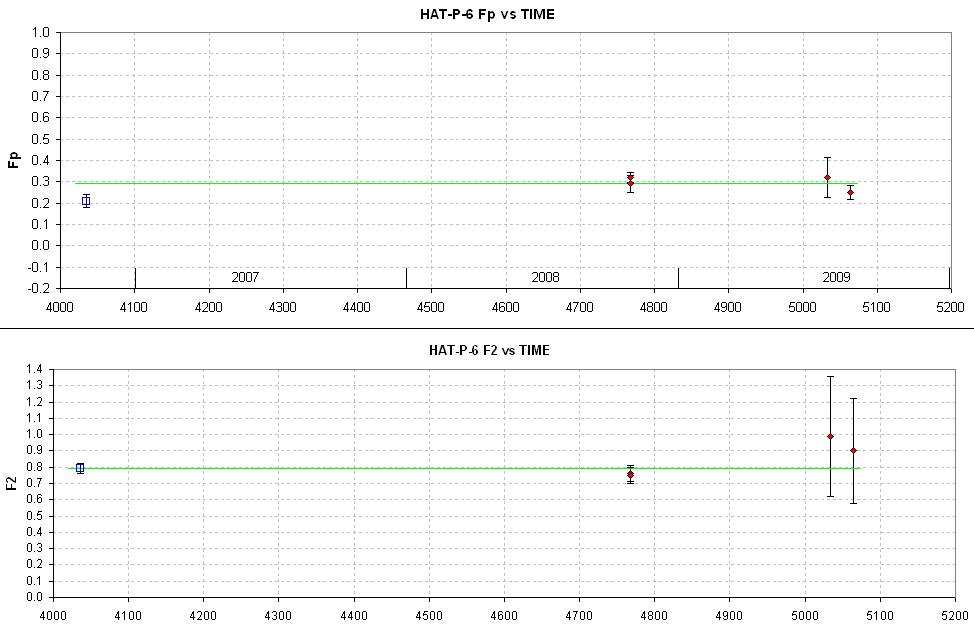
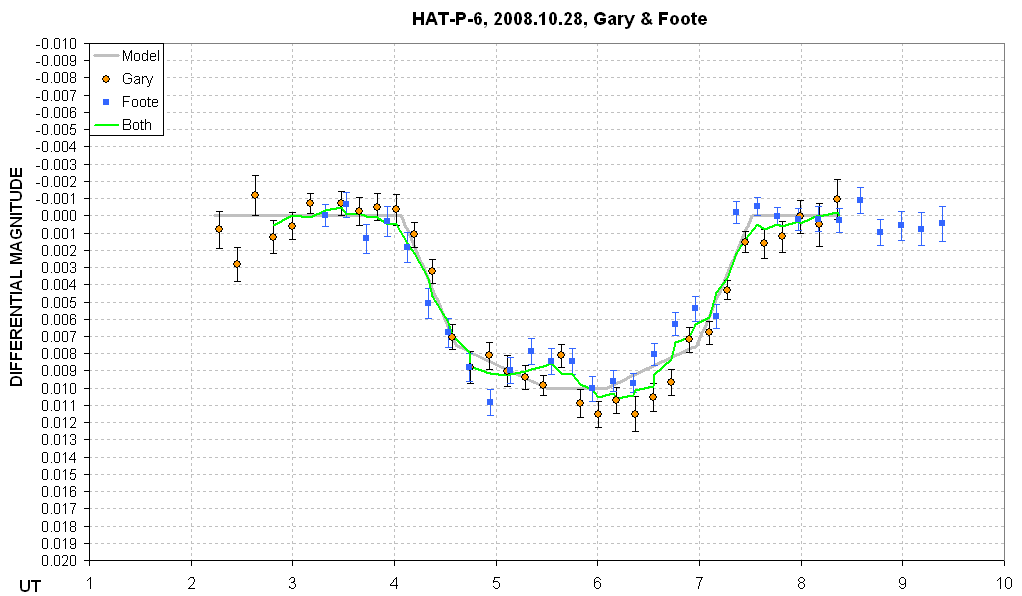
Occasionally systematic variations by two observers of the same transit
will coincide to produce what might otherwise be identified as a real brightening
or fading. This may be an example. However, it is also possible that at
05.6 UT the exoplanet passed in front of a star spot (aka, sunspot) and
at 06.3 it passed in front of a bright area on the star. If only we had
a third set of observations!
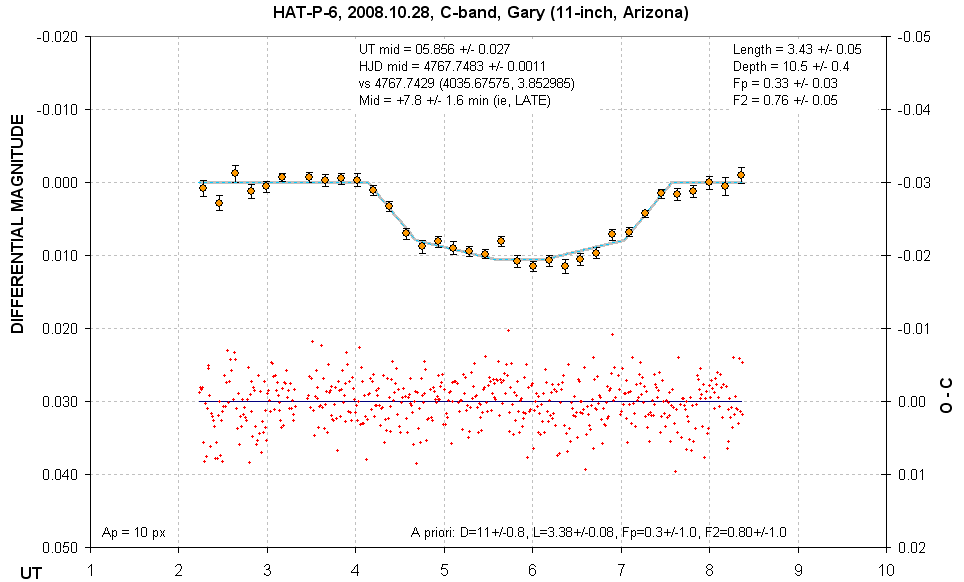
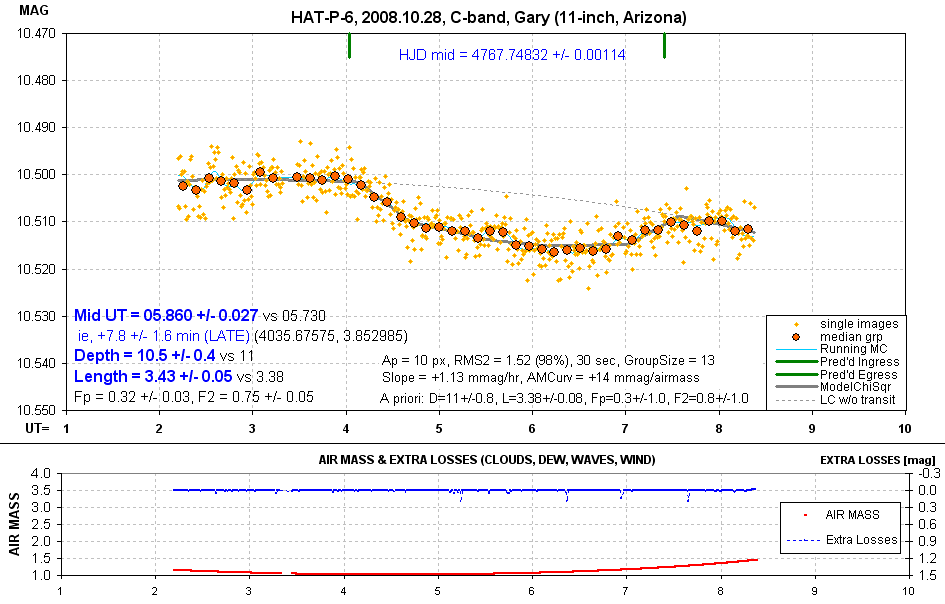
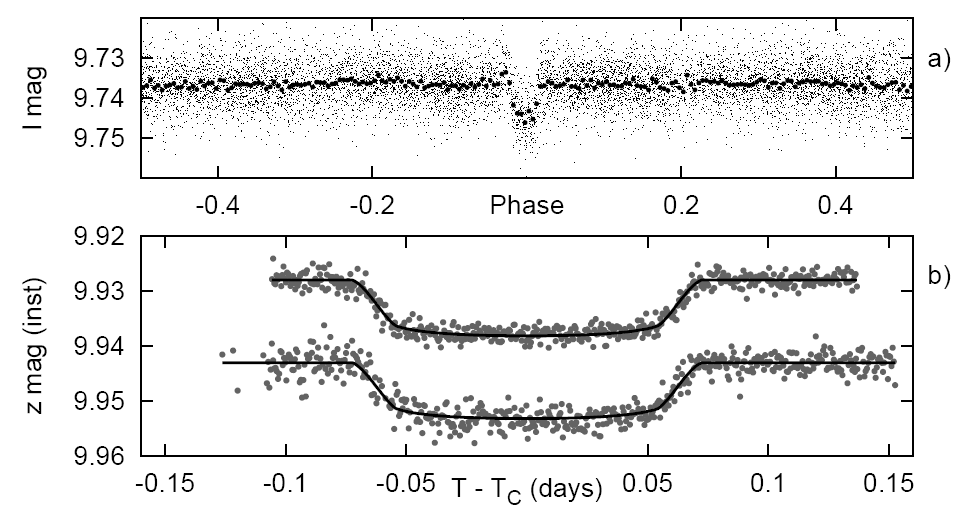
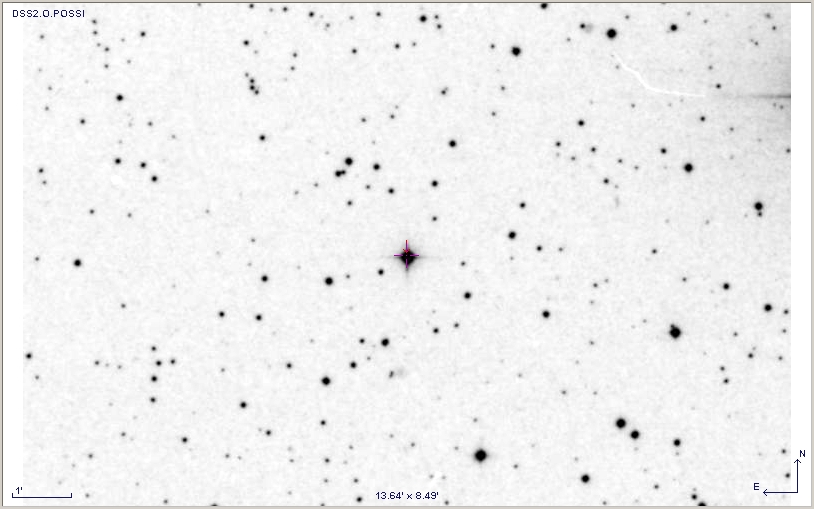
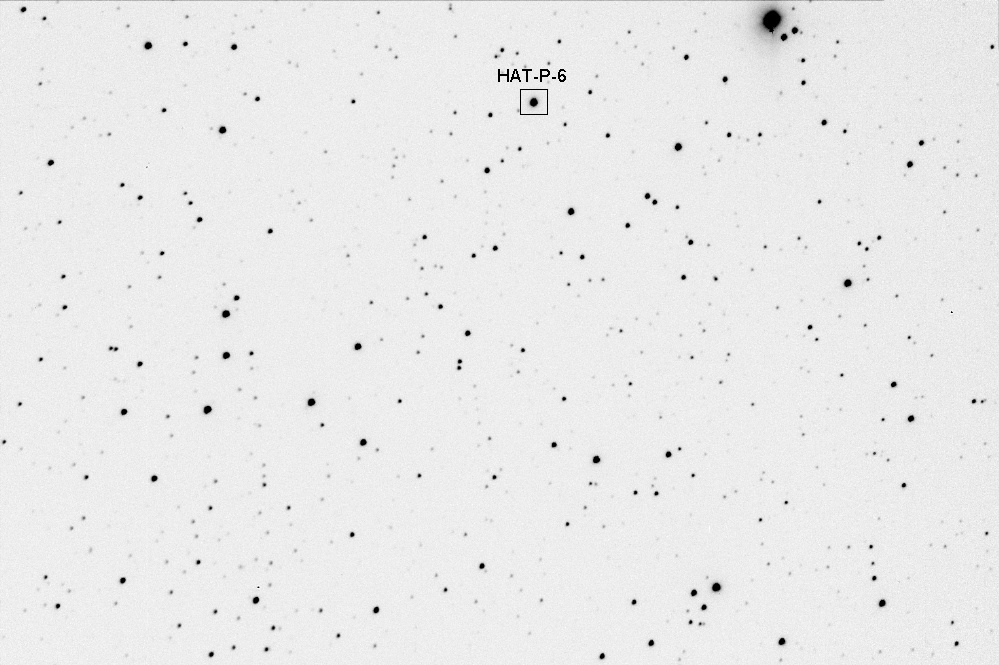
FOV = 30 x 20 'arc.
Discovery paper by Noyes et al, 2008 (arXiv version): http://lanl.arxiv.org/abs/0710.2894
Return to calling web page AXA
____________________________________________________________________
WebMaster: Bruce
L. Gary. Nothing
on this web page is copyrighted. This site opened:
October 16, 2007. Last Update: 2009.08.25